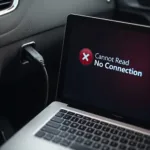OBD2 mode charts are essential for anyone who wants to delve deeper into vehicle diagnostics. They provide a structured roadmap to the various data streams accessible through your OBD2 scanner, allowing for a more informed and targeted diagnostic approach. This guide will explore the intricacies of OBD2 mode charts, offering a practical understanding of their functionality and application.
OBD2, or On-Board Diagnostics II, is a standardized system that allows external devices, like scanners, to communicate with a vehicle’s computer and access diagnostic information. This information is organized into “modes,” each representing a specific set of data. These modes, from Mode $01 to Mode $09, are documented in OBD2 mode charts. Understanding these charts is like having a key to unlock the secrets of your car’s performance. obd2 code readers with live time can provide real-time access to these modes, empowering you to monitor your vehicle’s health proactively.
Decoding the OBD2 Modes
Each mode in an OBD2 mode chart corresponds to a specific type of data. Let’s break down the most commonly used modes:
Mode $01: Current Data
This mode provides real-time data about the vehicle’s current operating status. This includes parameters like engine speed, coolant temperature, and oxygen sensor readings. Accessing this information can help identify immediate issues and monitor performance changes.
Mode $02: Freeze Frame Data
Mode $02 captures a snapshot of the vehicle’s data at the moment a fault code was triggered. This “freeze frame” data can provide crucial context for understanding the conditions that led to the fault.
Mode $03: Stored Diagnostic Trouble Codes (DTCs)
This is perhaps the most frequently used mode. Mode $03 retrieves stored DTCs, which are codes that indicate specific malfunctions detected by the vehicle’s onboard diagnostic system.
Mode $04: Clear/Reset Emission-Related Diagnostic Information
Mode $04 allows you to clear stored DTCs and reset the check engine light. This is useful after repairs have been made to confirm the issue has been resolved. However, it’s crucial to understand that clearing codes doesn’t fix the underlying problem.
Mode $05: Oxygen Sensor Monitoring Test Results
This mode provides data from the oxygen sensor monitoring tests performed by the vehicle’s computer. This is particularly valuable for diagnosing emissions-related problems.
Mode $06: Test Results for On-Board Monitoring Tests
Mode $06 provides results for other on-board monitoring tests, such as those related to the evaporative emissions system. obd2 female to usb adapters can facilitate easy connection to a computer for detailed data analysis.
Mode $07: Pending Diagnostic Trouble Codes
This mode retrieves pending DTCs, which are codes that have been detected but haven’t yet occurred frequently enough to trigger the check engine light.
Mode $08: Bidirectional Control
Mode $08 allows for bidirectional control of certain vehicle components, enabling tests like activating relays or solenoids. This is generally used by professional mechanics for more advanced diagnostics. An autophix obd2 scanner can provide access to these advanced features.
Mode $09: Vehicle Information
Mode $09 provides vehicle-specific information such as the VIN (Vehicle Identification Number), calibration IDs, and CVN (Calibration Verification Number).
Why are OBD2 Mode Charts Important?
OBD2 mode charts provide a crucial reference for understanding the wealth of data available through your OBD2 scanner. They empower you to:
- Targeted Diagnostics: Identify the specific mode required for the information you seek.
- Efficient Troubleshooting: Quickly pinpoint potential issues by understanding the data each mode provides.
- Informed Decision Making: Make better repair decisions based on a deeper understanding of your vehicle’s performance. obd1 ford mustang codes plug obd2 offers insights into older vehicle diagnostic systems.
Conclusion
Understanding OBD2 mode charts is a cornerstone of effective vehicle diagnostics. By utilizing this guide and familiarizing yourself with the information available through each mode, you can significantly enhance your ability to diagnose and troubleshoot vehicle problems. This knowledge will empower you to take control of your vehicle’s maintenance and ensure optimal performance. tvs supercharger obd2 wot datalog file can provide specific insights for performance tuning.
FAQ
- What is the most common OBD2 mode? Mode $03 for retrieving DTCs.
- Can I clear codes with an OBD2 mode chart? No, you need a scanner to use Mode $04 to clear codes.
- What is freeze frame data? Data captured at the moment a fault code was triggered.
- Where can I find an OBD2 mode chart? Online or in vehicle repair manuals.
- Do all vehicles support all OBD2 modes? No, some modes might not be supported by all vehicles.
- What is Mode $08 used for? Bidirectional control of vehicle components.
- What does Mode $09 provide? Vehicle-specific information like the VIN.
For support contact WhatsApp: +1(641)206-8880, Email: [email protected] or 789 Elm Street, San Francisco, CA 94102, USA. We have 24/7 customer service.
